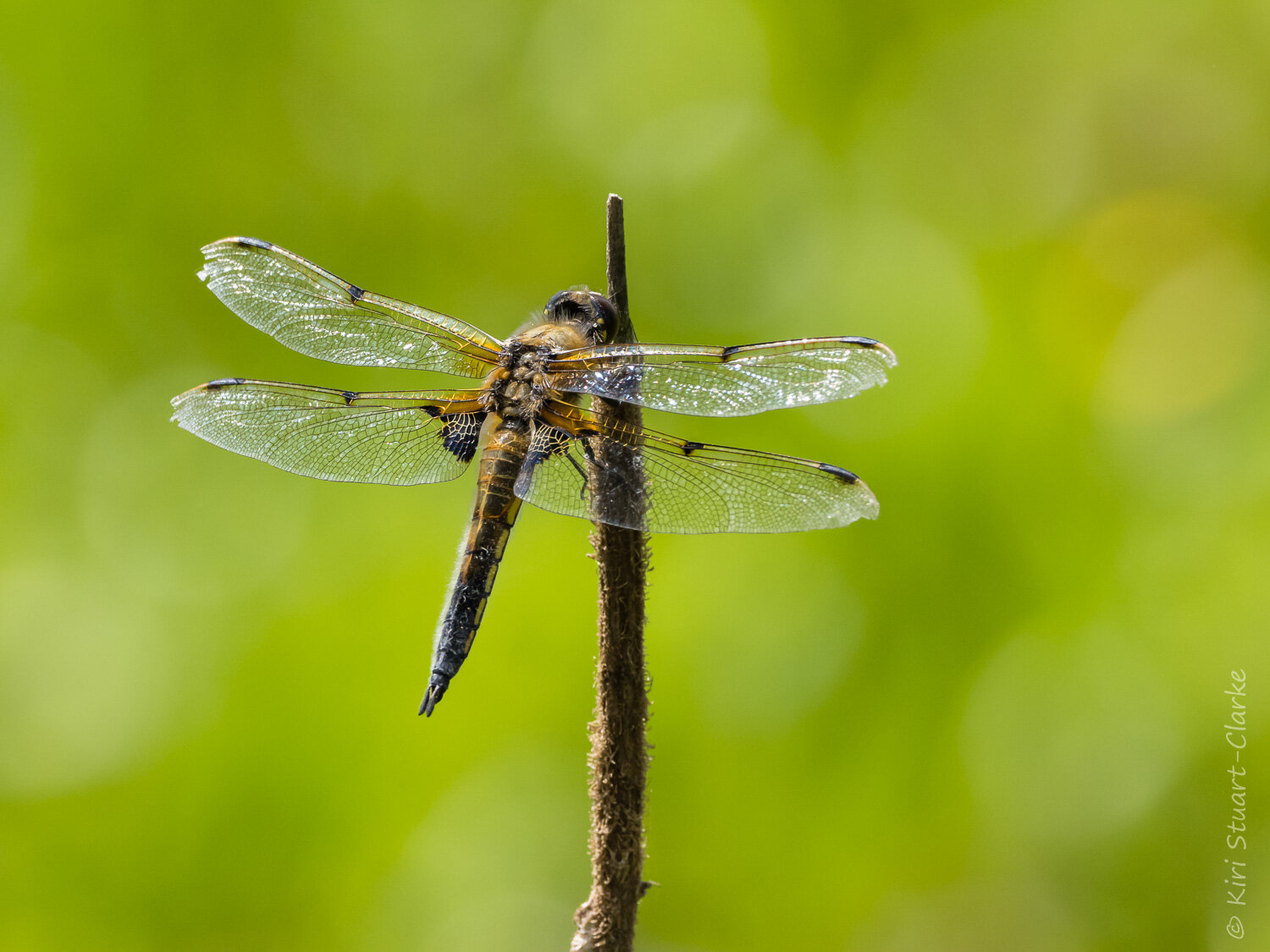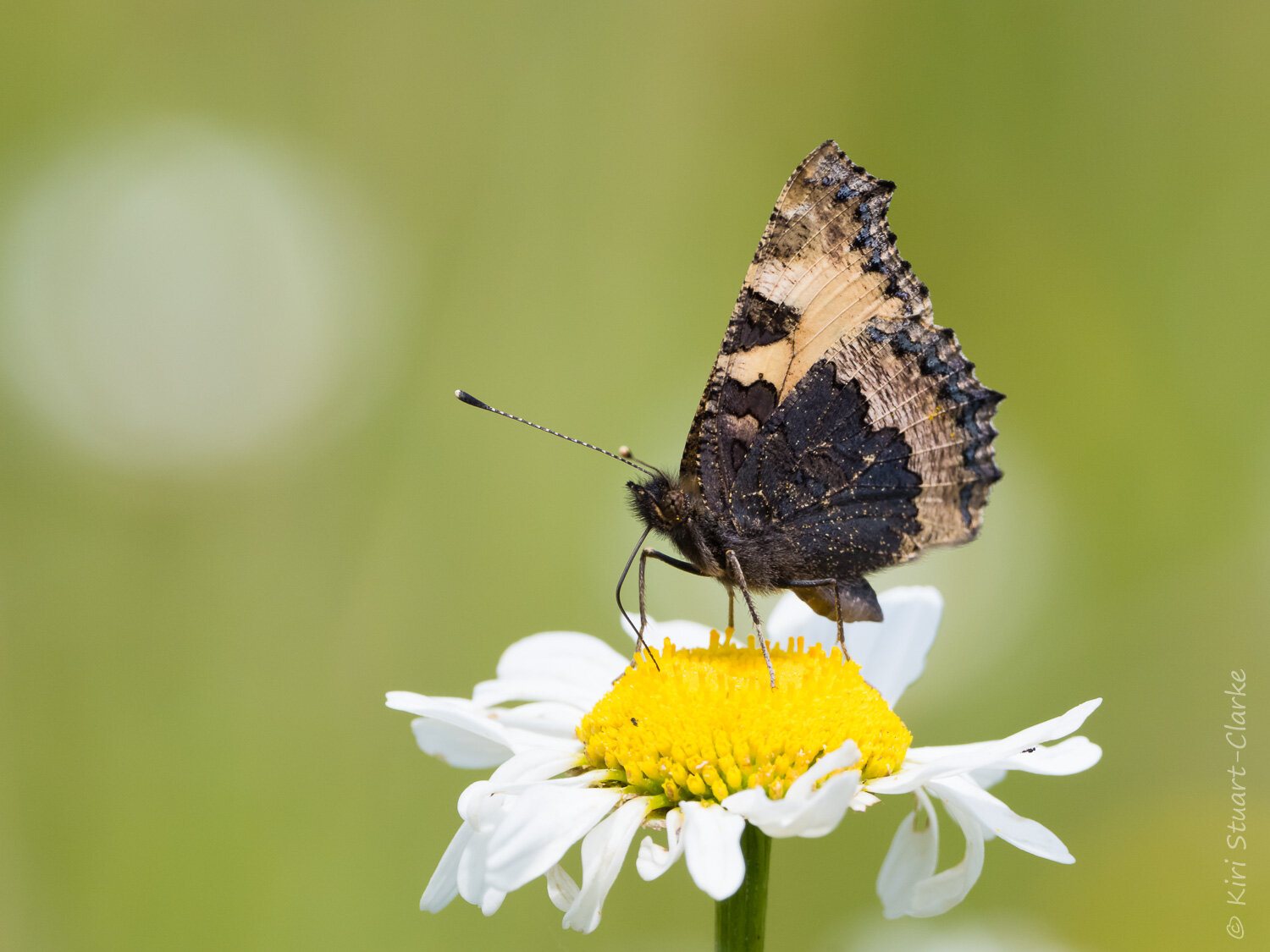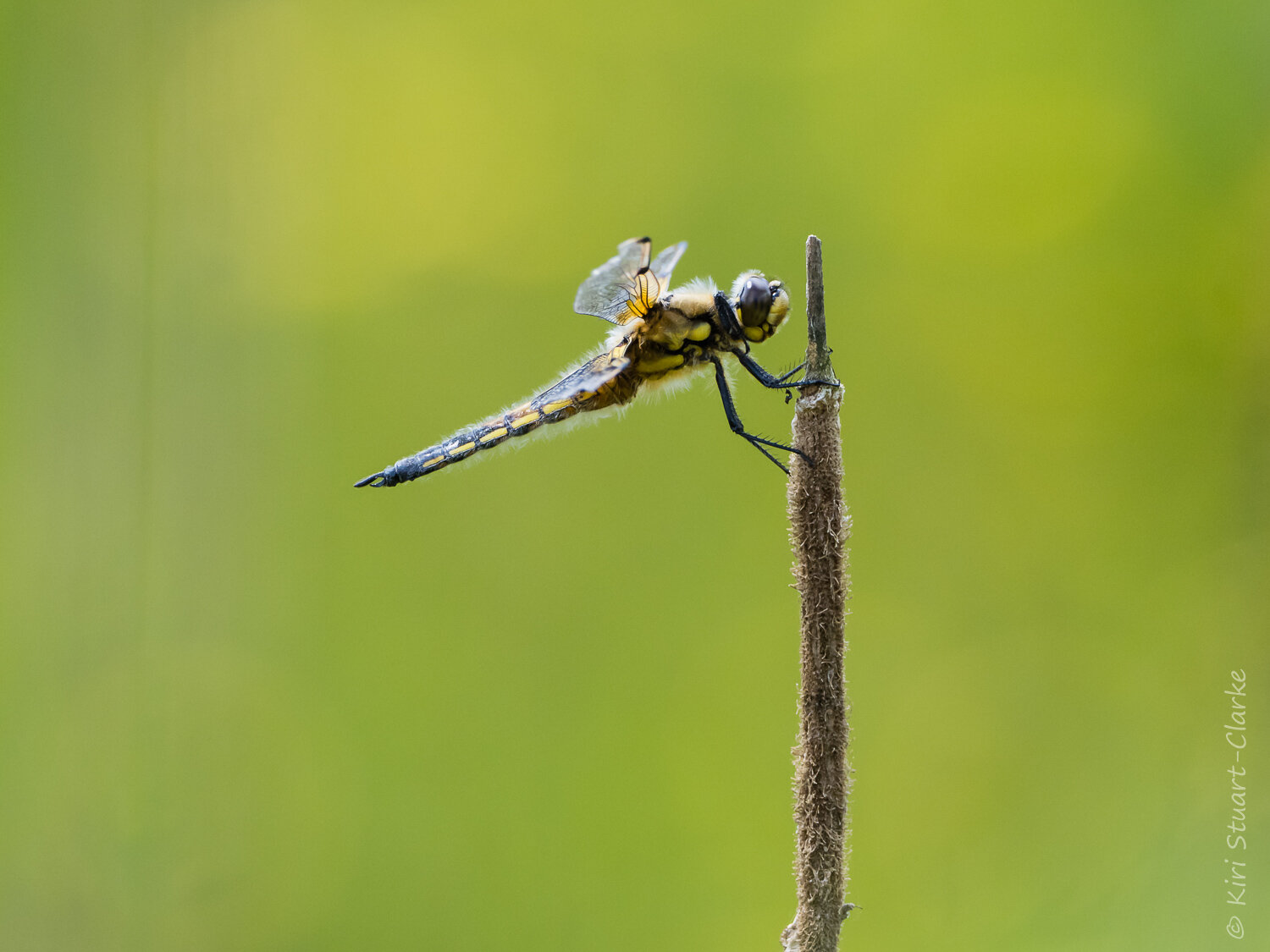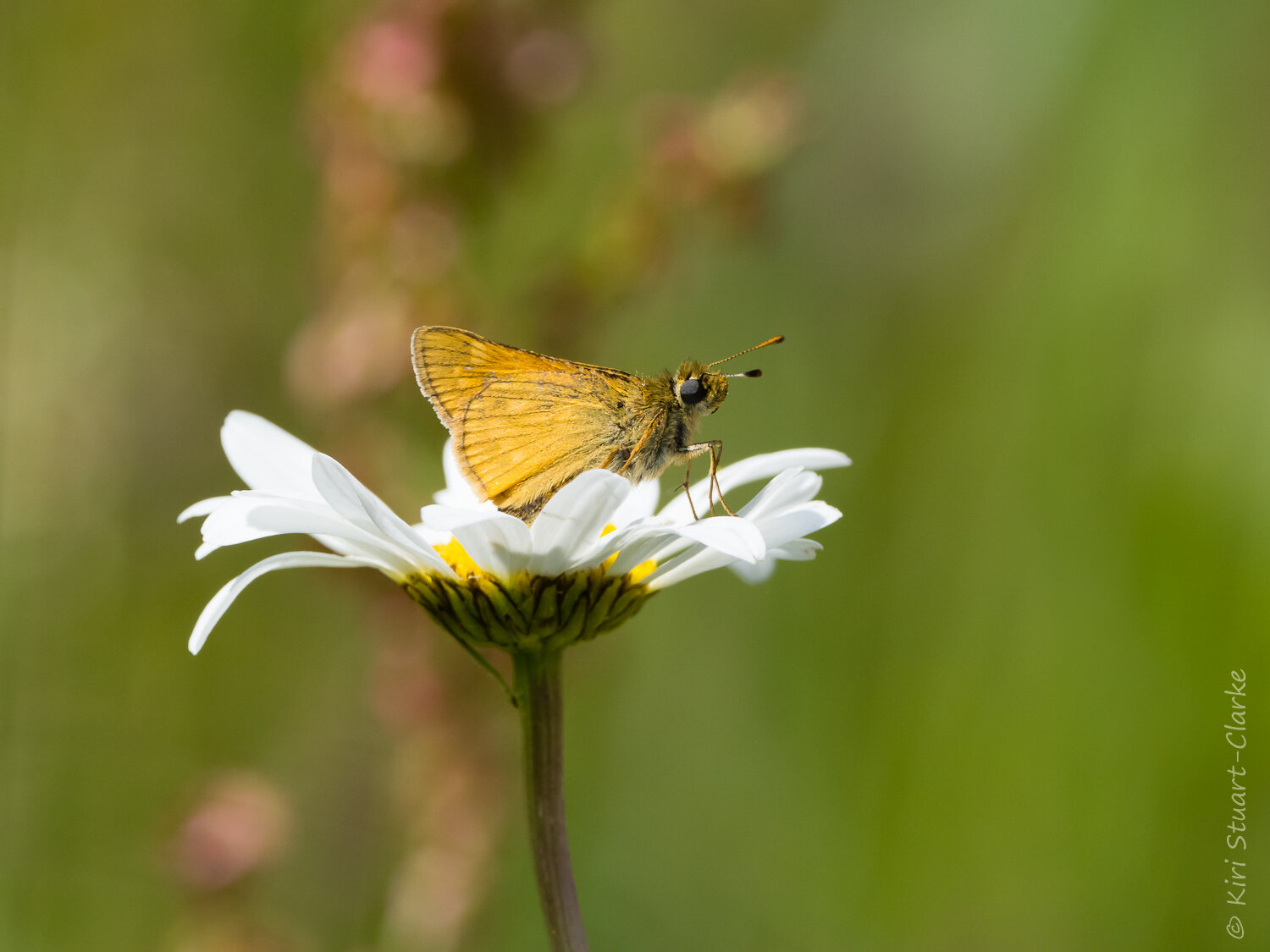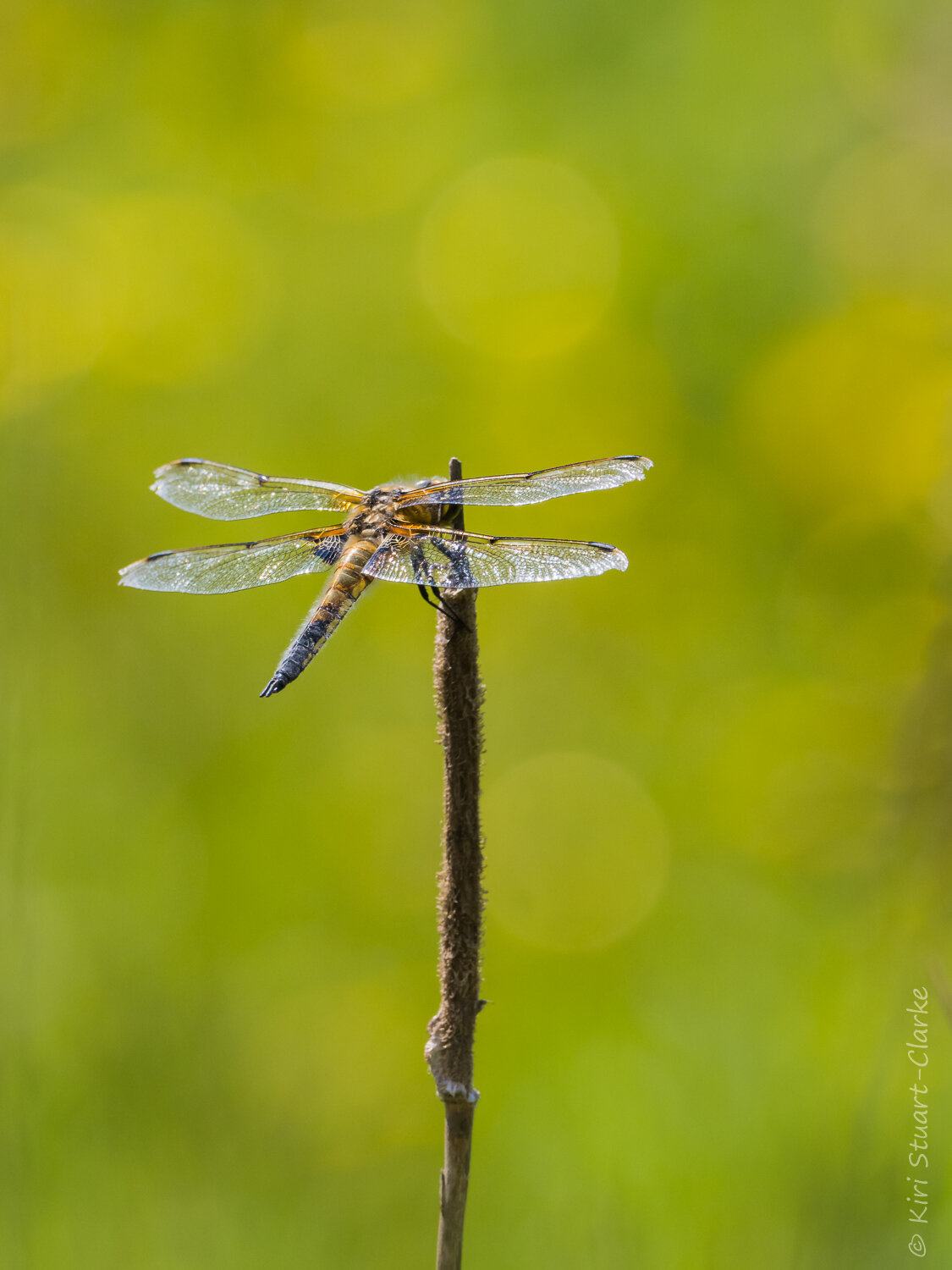The sight of a Common Darter dragonfly perching on Purple Loosestrife is a sure sign that autumn is just around the corner …
Its funny how you intuitively sense the turning of the seasons even before anything obvious has actually changed. Its like a little pause as nature takes its breath before things transition.
The days are calm, its still hot and sunny, storms have yet to arrive; yet things are somehow imperceptibly different. Maybe the light is softer and more golden, maybe a dew appears, maybe you notice a spiders web, or dusk arriving that little bit earlier.
German writer Kurt Tucholsky called this magical, all-too-brief hiatus between summer and autumn the “Fifth season”. Ironically, Tucholsky lived during a period of transition himself -becoming a major literary figure during the turbulent Weimar period in Germany and being one of the first writers to have books burned when Hitler came to power. I couldn’t find an English translation so I’ve attempted a rough side-by-side translation of his poem below (my German translation scores at uni were always lousy, so please forgive any linguistic clumsiness).
For me nothing evokes this “fifth season” like the sight of Small Copper butterflies dancing amongst the beautiful magenta Purple Loosestrife flowerspikes that encircle my wildlife pond, and crimson Common Darters waging their ariel battles and hovering in tandem above the water. Such a beautiful, yet ephemeral sights …
“One morning you smell autumn. It is not yet cold; it is not yet windy;
nothing actually has changed at all - and yet everything has.”
Die Fünfte Jahreszeit - Kurt Tucholsky
Wenn der Sommer vorbei ist und die Ernte in die Scheuern gebracht ist, wenn
sich die Natur niederlegt, wie ein ganz altes Pferd, das sich im Stall hinlegt,
so müde ist es - wenn der späte Nachsommer im Verklingen ist und der frühe
Herbst noch nicht angefangen hat - dann ist die fünfte Jahreszeit.
Nun ruht es. Die Natur hält den Atem an;
an andern Tagen atmet sie unmerklich
aus leise wogender Brust. Nun ist alles vorüber: geboren ist, gereift ist, gewachsen ist, gelaicht ist, geerntet ist - nun ist es vorüber.
Nun sind da noch die Blätter und die Sträucher,
aber im Augenblick dient das zugar nichts; wenn überhaupt in der Natur ein Zweck verborgen ist: im Augenblicksteht das Räderwerk still. Es ruht.
Mücken spielen im schwarzgoldenen Licht, im Licht sind wirklich schwarze Töne,
tiefes Altgold liegt unter den Buchen, Pflaumenblau auf den Höhen ... kein Blatt
bewegt sich, es ist ganz still. Blank sind die Farben, der See liegt wie gemalt,
es ist ganz still. Ein Boot, das flußab gleitet, Aufgespartes wird dahingegeben - es ruht.
So vier, so acht Tage - Und dann geht etwas vor. Eines Morgens riechst du den Herbst. Es ist noch nicht kalt; es ist nicht windig; es hat sich eigentlich gar nichts geändert - und doch alles.
Noch ist alles wie gestern: Die Blätter, die Bäume, die Sträucher ... aber nun ist alles anders....Das Wunder hat vielleicht vier Tage gedauert oder fünf, und du hast gewünscht,
es solle nie, nie aufhören... Spätsommer, Frühherbst und das, was zwischen ihnen
beiden liegt. Eine ganz kurze Spanne Zeit im Jahre.
Es ist die fünfte und schönste Jahreszeit.
The Fifth Season - Kurt Tucholsky
When summer is over and the harvest brought into the barns, when nature lies down like an old horse that lies down in the stall,
it is so tired - when the late
days of summer are waning and early autumn has not yet arrived - that is
the fifth season.
Now it rests. Nature holds its breath;
on other days it breathes imperceptibly
from a gently heaving chest. Now everything is over: born, ripened, grown, spawned, harvested - now it is over.
Now the leaves and bushes are still there,
but in an instant that turns to nothing;
if there is a purpose hidden in nature at all: for a second the gears stand still. It rests.
Midges play in black-golden light, in the light are really black tones,
deep antique gold lies under the beeches, plum-blue in the canopy … no leaf
stirs, it is completely still. The colours are bold, the lake is as if painted,
it is completely still. A boat that glides downstream,
What is stored up is released - it rests.
So four, so eight days - and then something happens. One morning you smell autumn. It is not yet cold; it is not yet windy; nothing actually has changed at all - and yet everything has.
Everything is still like yesterday: the leaves, the trees, the bushes … but now everything is different …. The wonder has lasted maybe four days or five, and you have wished
it would never ever end…late summer, early autumn and that which lies between them both. A whole short span of time in the year.
It is the fith and most beautiful season.
Seeing Small Copper butterflies in my wildlife garden is another hint that autumn is on its way.
